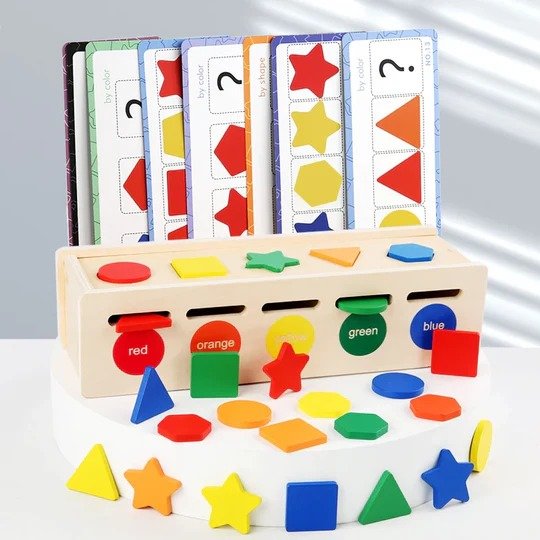Parallel play is an important concept in child development that provides insight into how children interact and learn from one another during their early years. It refers to a stage of play where children play alongside each other, but do not necessarily interact directly or share the same play experiences. This type of play is a crucial developmental milestone and contributes significantly to a child’s social, emotional, and cognitive growth. In this article, we will explore the define parallel play its characteristics, benefits, and its role in the broader context of social development.
What is Parallel Play?
Parallel play is defined as a stage of play where children play independently next to each other without directly interacting. During parallel play, each child engages with their own toys or activities while being aware of the presence of other children. This stage typically occurs in toddlers and preschoolers and is an important part of social development.
The key characteristic of parallel plays is that while children are in close proximity, they do not attempt to influence each other’s play or collaborate. Instead, they may observe and occasionally mimic each other, but the interaction remains minimal. This type of play is a normal and healthy part of early childhood development and lays the foundation for more complex social interactions in the future.
Characteristics of Parallel Play
Parallel play is characterized by several distinct features. Firstly, children engaging in parallel play are focused on their own activities rather than on interacting with others. They might be involved in similar activities, such as building with blocks or drawing, but they do so independently.
Another characteristic is the minimal verbal communication between the children. While they may occasionally speak to each other or exchange looks, the communication is generally limited and not focused on collaborative play. Additionally, children are often content with their own play and do not seem to seek approval or interaction from their peers.
Finally, parallel play often involves parallel actions, where children use similar toys or engage in similar activities but do so separately. For example, two children might play with dolls side by side but do so with different sets of dolls and without any interaction.
The Developmental Importance of Parallel Play
Parallel play is an essential developmental stage that serves several purposes. It provides children with the opportunity to develop independence and learn to entertain themselves without relying on others. This autonomy is crucial for building self-confidence and self-reliance.
Moreover, parallel play allows children to observe and learn from their peers. By watching other children, they can gain new ideas, understand different ways of using toys, and develop their problem-solving skills. This observational learning is an important component of cognitive development and helps children acquire new skills and knowledge.
Additionally, parallel play can be seen as a precursor to more complex forms of social interaction. As children become more comfortable with the presence of others and more skilled in their play, they gradually begin to engage in associative play and cooperative play, where direct interaction and collaboration become more common.
How Parallel Play Fits into the Stages of Play
Parallel play is one of several stages of play that children typically experience as they grow. It generally follows solitary play, where children play alone without much interest in other children. As children develop social skills and become more aware of their peers, they transition into parallel play.
Following parallel play, children often move into associative play, where they start to interact with others while still engaging in their own activities. This might include sharing toys, exchanging ideas, or engaging in simple group activities. Eventually, children progress to cooperative play, which involves more complex social interactions, such as working together towards a common goal and taking on specific roles within a group.
Each stage of play builds on the previous one, with parallel play serving as a bridge between solitary play and more interactive forms of play. Understanding these stages helps caregivers and educators support children’s social development effectively.
Encouraging Parallel Play in Children
Encouraging parallel play can be beneficial for children’s social development. One way to promote parallel play is by providing a variety of toys and activities that can be used independently. This allows children to engage in their own play while being in the same space as their peers.
Creating play environments that are conducive to parallel play can also help. For example, setting up play areas where children can see and interact with others without being forced to engage directly can encourage them to observe and mimic their peers.
Additionally, modeling positive play behaviors and gently guiding children towards parallel play situations can support their development. It’s important to be patient and allow children to engage in parallel play at their own pace while providing opportunities for more interactive play as they progress.
Observing Parallel Play: What to Look For
When observing parallel play, caregivers and educators should look for several key behaviors. Children engaged in parallel play will typically be focused on their own activities while being aware of others around them. They may occasionally glance at or mimic peers, but their primary focus remains on their own play.
It’s also important to observe how children react to the presence of others. Children engaged in parallel play should show signs of being comfortable with the proximity of their peers without feeling the need to interact directly. This comfort indicates that they are successfully navigating this stage of social development.
Additionally, observing how children transition from parallel play to more interactive forms of play can provide insights into their social development. Children who are able to gradually engage in associative or cooperative play demonstrate the successful progression of their social skills.
Common Misconceptions About Parallel Play
There are several common misconceptions about parallel play that are important to address. One misconception is that parallel play indicates a lack of social interest or skills. In reality, parallel play is a normal and healthy stage of development that provides children with the opportunity to build independence and observational skills.
Another misconception is that parallel play should be discouraged in favor of more interactive play. However, parallel play is a valuable stage that serves a specific purpose in social development. It is important to support children through this stage and allow them to progress to more interactive forms of play at their own pace.
Finally, some believe that parallel play is a sign of shyness or social anxiety. While parallel play can occur in children who are naturally more reserved, it is also a common and normal stage of development for all children. Providing a supportive and understanding environment helps children move through this stage and develop their social skills over time.
Conclusion
In conclusion, parallel play is a crucial stage in child development that provides valuable opportunities for children to build independence, observational skills, and confidence. By understanding the characteristics and benefits of parallel play, caregivers and educators can better support children as they navigate this important developmental milestone.
Recognizing that parallel play is a normal and healthy part of social development helps to dispel misconceptions and encourages a supportive approach to nurturing children’s growth. As children progress from parallel play to more interactive forms of play, they develop essential social skills and gain the confidence needed to engage in complex social interactions.
By embracing and supporting parallel play, we provide children with a strong foundation for future social development and lifelong learning. Understanding and valuing this stage of play ensures that children receive the guidance and encouragement they need to thrive as they grow and develop.



